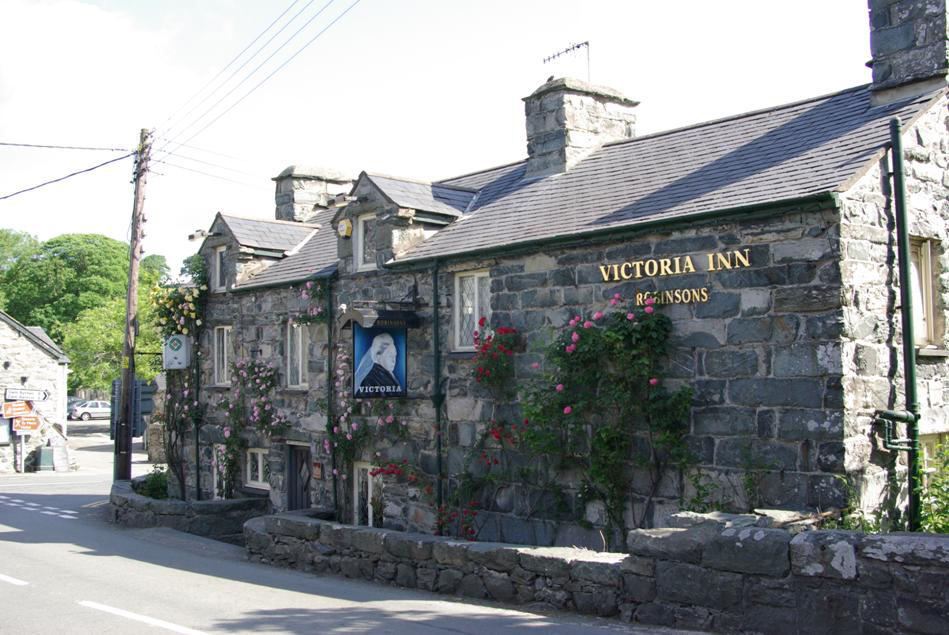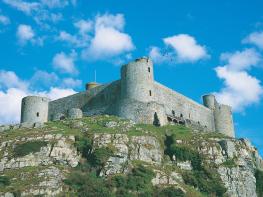A peaceful small site with good views on a working farm close to the long sandy beach at Heels…
Aberdaron and Uwchmynydd

A coastal walk to Wales’s ‘Land’s End’ with stunning views to Bardsey Island
8.5 miles (13.7kms)
About the walk
There’s an end of the world feel to Aberdaron, the most westerly of the Llyn Peninsula’s villages. Indeed, the tip of this remote peninsula is often referred to as the ‘Land’s End of Wales’. It is certainly a beautiful spot and, unlike the real Land’s End, completely unspoiled by commercial exploitation. Whitewashed cottages cluster around two historic bridges, opening out into a long, sandy bay backed by gorse- and heather-clad hills. You’ll be heading out along the western arm of the bay, following the rugged shoreline to Pen y Cil before turning towards the peninsula’s northern coast. There are stunning coastal views throughout the walk, but it’s the alluring outline of Bardsey Island (Ynys Enlli in Welsh) that will demand your attention.
Island of 20,000 saints
There are strong historic links between Aberdaron and Bardsey Island, which has been a place of pilgrimage since the 6th century, when monks from Bangor Is-coed (Bangor-on-Dee) founded a monastery there. The island acquired a reputation for holiness, attracting pilgrims in their droves. There were two main pilgrims’ roads through Llyn, one along the north coast from Bangor and the other along the south coast from Criccieth. One 12th-century pope declared that three pilgrimages to Bardsey equalled one to Jerusalem – an indication of how difficult the island was to get to during the Middle Ages.
Both pilgrims’ roads through Llyn terminated in Aberdaron, where pilgrims would gather in Y Gegin Fawr for a final meal before crossing the choppy sound to Bardsey. Boats set sail not from Aberdaron itself, but from a small, sheltered cove (Porth Meudwy) to the southwest. For most pilgrims, the short crossing to the island would be the most hazardous part of their whole journey. Powerful tidal races and concealed rocks can prove fatal even to today’s engine-powered boats, and medieval ships would have been completely at the wind’s mercy.
Most visitors today come for the scenery and the wildlife. The island is particularly important for seabirds, being sited on a number of major migratory routes. Dolphins, porpoises and grey seals can also be seen in the surrounding waters, and a number of rare plants grow on the island.
Shelter from the storm
The higher slopes of Mynydd Mawr and Mynydd Anelog are a good place to contemplate the patchwork of stone-walled fields so characteristic of this part of Llyn. The tops of these walls were traditionally lined with turf and provided shelter for livestock during ferocious winter storms. Salt spray and centuries of farming on thin soils have created an almost treeless landscape in Llyn’s far west.
Walk directions
From the car park, walk towards the beach and turn right. (At high tide, follow an alternative route across the cliffs.) Near the end of the bay, ford a small stream and climb steps on the right to a junction with the Wales Coast Path. Turn left and climb again to a path junction on a grassy clifftop.
Follow the coast path left along the clifftops. Descend steeply into the little cove of Porth Meudwy, then climb steeply back out of it. Continue south towards Pen y Cil. After rounding the headland, the path climbs to the right, providing the first views of Bardsey Island.
The path turns left to pass a safe distance behind the spectacular cliffs of Parwyd. As you enter the National Trust property of Bychestyn, turn left again, back towards the sea. The path soon swings right, following the coast closely as far as Porth Felen.
From behind Porth Felen, climb diagonally left to a white-topped post between two hillocks. Keep following similar posts as far as Mynydd Mawr, where the path climbs steeply to the right and emerges in a small car park by a former coastguard lookout station.
After a few paces along the concrete access track, the route bears left onto a grassy path through gorse. You are now heading roughly northeast, towards the prominent coastal hill of Mynydd Anelog. Descend, climb, then descend again. The next climb is much longer, eventually levelling out on Anelog’s western spur.
At the corner of a dry-stone wall, leave the coast path by turning right and taking a clear grassy track above and to the right of a whitewashed cottage. This curves across the slope of the hill, passing to the right of another cottage and joining the line of a fence.
Continue to a junction with a grassy track in front of a bungalow (Talcen y Foel). Follow the main track to the left, climbing slightly before descending to join a tarmac lane. Keep ahead to a T-junction by Uwchmynydd Chapel and turn left. Follow this quiet minor road for about two-thirds of a mile (1km) to a T-junction.
Turn right (signposted ‘Aberdaron’) and shortly cross a small stream. Straightaway, turn right through a kissing gate and follow the stream towards the sea. After passing between two houses, cross a footbridge on the right and continue to a junction with the Wales Coast Path. Descend steps on the left and retrace your steps along the beach to Aberdaron.
Additional information
Rugged coast path, grassy tracks, minor road
High cliffs and rugged coastal scenery
Sheep grazing on cliffs – keep on lead
OS Explorer 253 Lleyn Peninsula West
Car park in Aberdaron (honesty box)
Seasonal toilets in car park and community toilet in hotel
WALKING IN SAFETY
Read our tips to look after yourself and the environment when following this walk.
Find out more
Also in the area
About the area
Discover Gwynedd
The county of Gwynedd is home to most of the Snowdonia National Park – including the wettest spot in Britain, an arête running up to Snowdon’s summit that receives an average annual rainfall of 4,473mm. With its mighty peaks, rivers and strong Welsh heritage (it has the highest proportion of Welsh-speakers in all of Wales), it’s always been an extremely popular place to visit and live. The busiest part is around Snowdon; around 750,000 people climb, walk or ride the train to the summit each year.
Also in Gwynedd is the Llyn Peninsula, a remote part of Wales sticking 30 miles out into the Irish Sea. At the base of the peninsula is Porthmadog, a small town linked to Snowdonia by two steam railways – the Welsh Highland Railway and the Ffestiniog Railway. Other popular places are Criccieth, with a castle on its headland overlooking the beach, Pwllheli, and Abersoch and the St Tudwal Islands. Elsewhere, the peninsula is all about wildlife, tranquillity, and ancient sacred sites. Tre’r Ceiri hill fort is an Iron Age settlement set beside the coastal mountain of Yr Eifl, while Bardsey Island, at the tip of the peninsula, was the site of a fifth-century Celtic monastery.
Nearby stays
Restaurants and Pubs
Nearby experiences
Recommended things to do
Why choose Rated Trips?
Your trusted guide to rated places across the UK
The best coverage
Discover more than 15,000 professionally rated places to stay, eat and visit from across the UK and Ireland.
Quality assured
Choose a place to stay safe in the knowledge that it has been expertly assessed by trained assessors.
Plan your next trip
Search by location or the type of place you're visiting to find your next ideal holiday experience.
Travel inspiration
Read our articles, city guides and recommended things to do for inspiration. We're here to help you explore the UK.













